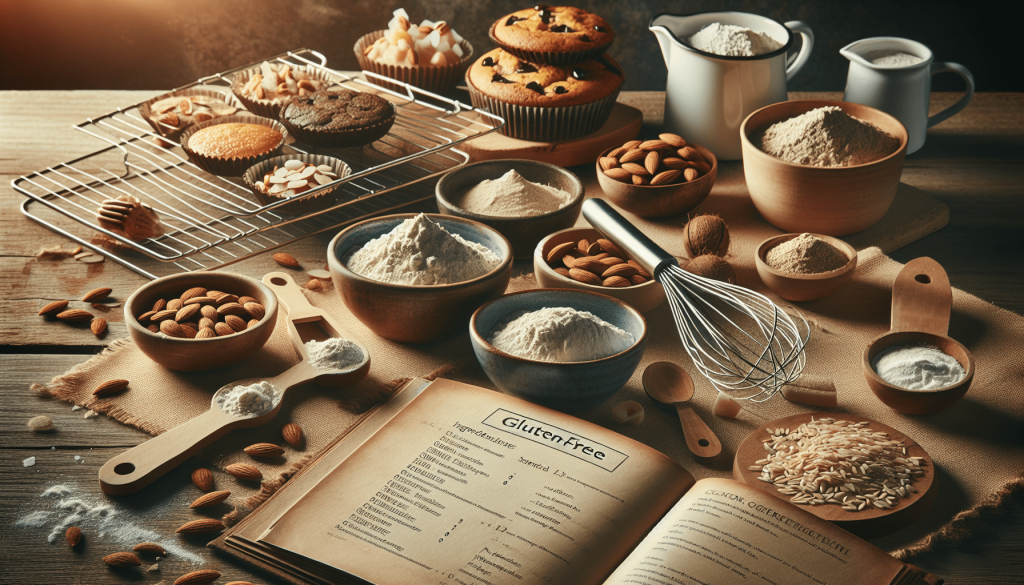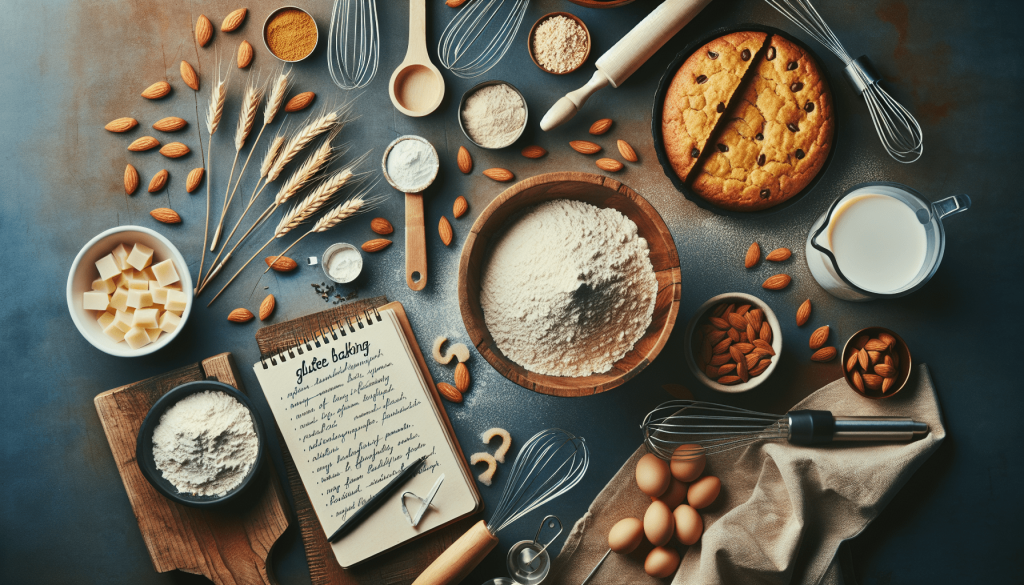Get ready to improve your gluten-free baking skills with these popular cooking tips! If you are new to gluten-free baking or simply looking for ways to enhance your recipes, you’ve come to the right place. In this article, we will share some of the most popular and effective tips to help you create delicious and foolproof gluten-free baked goods. From choosing the right flours to mastering the perfect texture, these tips will have you baking like a pro in no time. So grab your apron, preheat the oven, and let’s get started!

Use Gluten-Free Flour Mixes
Finding the right flour mix is key to successful gluten-free baking. Luckily, there are many premade gluten-free flour mixes available on the market. These mixes are specifically formulated to mimic the texture and taste of traditional wheat-based flours. Look for certified gluten-free products to ensure that they are free from any cross-contamination.
If you’re feeling adventurous, you can also experiment with creating your own gluten-free flour mix. A simple blend of rice flour, potato starch, and tapioca flour can serve as a great base for many recipes. By adjusting the ratios of these flours, you can achieve the desired texture and flavor profile that you prefer.
Add Xanthan Gum or Guar Gum
One of the biggest challenges in gluten-free baking is achieving the elasticity and structure that gluten provides. To overcome this, you can add xanthan gum or guar gum to your recipes. These binding agents help create a more cohesive texture in your baked goods.
When using xanthan gum or guar gum, it’s important to start with a small amount and adjust based on the recipe. Adding too much can result in a gummy texture that is not pleasant to eat. So, be cautious and add these ingredients gradually until you achieve the desired consistency.
Increase Moisture
Gluten-free flours tend to absorb more moisture than their wheat counterparts. This means that you’ll need to increase the amount of liquid in your recipes to avoid dry and crumbly results. One simple way to add moisture is to incorporate an extra egg into your batter or dough. The additional fat and moisture from the egg can make a significant difference in the final texture.
Alternatively, you can use liquids such as milk or yogurt to increase the moisture content. Another excellent trick is to add fruit puree or applesauce, which not only adds moisture but also imparts a subtle sweetness to your baked goods.
Use Binding Agents
Binding agents are essential in gluten-free baking to help hold the ingredients together. Eggs are a fantastic natural binding agent that adds moisture and structure to your baked goods. Including them in your recipes can help prevent crumbly or dry results.
If you’re looking for an egg substitute, consider using flaxseed meal or chia seeds mixed with water. These seeds form a gel-like consistency when combined with water, mimicking the binding properties of eggs. For an extra boost of binding power, you can also try incorporating some gelatin or agar agar powder into your recipes.

Avoid Overmixing
When it comes to gluten-free baking, it’s important to mix your ingredients until just combined. Overmixing can lead to the development of a structure similar to gluten, resulting in a tough and dense final product. To avoid this, gently fold in your ingredients instead of vigorously stirring them. This will help maintain the light and tender texture that you desire in your baked goods.
Give It Time to Rise
Gluten-free dough or batter may take longer to rise compared to traditional recipes. This is because gluten provides structure and elasticity, allowing the dough to rise more quickly. To compensate for this, be patient and give your gluten-free baked goods ample time to rise.
Covering the dough or batter and letting it rest for an extended period allows the leavening agents to do their job. This can include using yeast or baking powder in combination with the 24-hour waiting method. By providing enough time for the ingredients to interact and develop flavors, you’ll achieve a more delicious and well-risen final product.
Experiment with Different Binding Agents
While eggs are a fantastic binding agent, there are other options you can try to experiment with different flavors and textures in your gluten-free baking. Almond butter, nut butters, or mashed bananas can all serve as excellent substitutes for eggs. These ingredients not only add moisture but also contribute to the overall structure of your baked goods.
When using alternative binding agents, be sure to adjust the measurements based on the recipe and your desired texture. Start with small amounts and gradually increase until you achieve the desired results. This experimentation can lead to unique and flavorful creations in your gluten-free baking adventures.
Use Good Quality Gluten-Free Ingredients
The quality of your ingredients plays a significant role in the taste and texture of your baked goods. It’s worth investing in high-quality gluten-free flours and other ingredients to ensure the best results. Opt for flours that are specifically labeled as gluten-free and certified to avoid any potential cross-contamination.
Freshness is also crucial when it comes to gluten-free baking. Check the expiration dates on your ingredients and store them properly to maintain their quality. Using fresh and high-quality ingredients can greatly improve the overall taste and texture of your gluten-free creations.
Experiment with Different Flours
Don’t limit yourself to just one type of gluten-free flour. There is a wide variety of alternative flours available that can add unique tastes and textures to your baking. Almond flour, coconut flour, and buckwheat flour are just a few examples of the many options out there.
Each flour has its own unique characteristics, so don’t be afraid to experiment and find your preferred combinations. Mixing different flours can result in a more balanced and interesting flavor profile in your baked goods. So, get creative and try different flour blends to discover new and delicious gluten-free treats.
Watch Baking Time and Temperature
Gluten-free baked goods often require slightly different baking times and temperatures compared to traditional recipes. It’s important to monitor the baking process closely to prevent undercooking or overcooking.
To ensure that your oven is at the correct temperature, consider using an oven thermometer. This will give you an accurate reading and help you adjust accordingly. Keep an eye on your baked goods and make any necessary adjustments to the baking time and temperature to achieve perfectly cooked and golden results.
By following these popular cooking tips for gluten-free baking, you’ll be well on your way to creating delicious and successful gluten-free treats. Remember to have fun and don’t be afraid to experiment with different ingredients and techniques. Happy baking!
